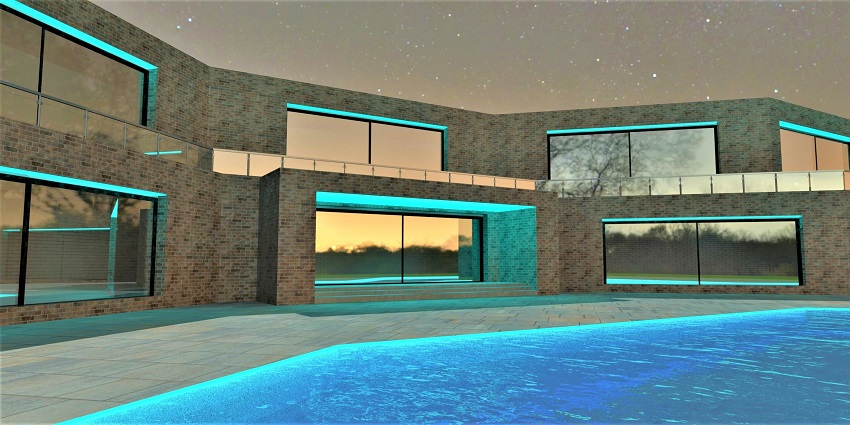The way we view and interact with visual content has evolved significantly in recent years. As the world has grown increasingly “digitised”, consumers have begun relying on 3D content to help them realistically visualise ideas, wherever they are.
In the past, rendering 3D content was a complex, labour-intensive, and often expensive process. However, the rising popularity of the XR market, alongside other new technologies, has paved the way for new rendering and development tools. RT3D, or “Real Time 3D” represents one of the most exciting innovations for the XR landscape, by enhancing the way we create and access 3D assets.
With RT3D, developers can access software solutions which allow users to interact with rendered assets as they’re created. It’s this technology which allows people in virtual, mixed, and augmented reality environments to experiment with 3D content without lag or disruption.
Here’s your introduction to the world of RT3D.
What is RT3D? The Basics of Real-Time Rendering
The term “RT3D” stands for “Real-time 3D”. RT3D rendering solutions are graphics systems capable of analysing, optimising, and producing three-dimensional images in real-time.
With the right software, companies and developers can digitally produce models, environments, and fully-interactive worlds within nano-seconds. If you’ve ever tried to imagine what a 2D image will look like in a 3D environment, you’ll know how complex the process can be. RT3D eliminates this issue, by instantly creating assets in the context of the environments they’ll occupy.
With 3D rendering, a computer system converts 3D wireframe models into 2D images, enhanced with photo-realistic, three-dimensional effects.
Innovators have created two forms of 3D rendering over the years – pre-rendering, and real-time rendering. With pre-rendering, 3D images are created and presented statically in an environment, removing the option for real-time interaction and customisation.
In real-time 3D rendering, the images and assets are produced in the moment, at high-speed. This means companies like video game developers can create huge virtual environments for users to move through, where their surroundings appear and evolve instantaneously. The software uses concepts like light and depth to enhance the quality of the experience, and deliver the highest possible degree of photorealism. Images are produced usually at a minimum rendering speed of 24 frames each second – the minimum a human eye needs to perceive instant movement.
What are the Advantages of RT3D?
Many companies are eager to embrace RT3D solutions because it allows for the creation of more informative, engaging digital experiences.
With RT3D, developers can integrate 3D images into the real world for AR applications, animating the environment around you with additional content. For instance, an AR app on your phone could use 3D rendering to deliver real-time directions to your phone when you’re following a map.
Real-time 3D rendering also allows for more streamlined virtual experiences. Whether in a standard video game or virtual reality environment, 3D rendering allows the environment you’re exploring to move in conjunction with your avatar or character. This creates a much smoother experience.
The primary benefits of RT3D technology include:
- Immersivity: The digital representation created by RT3D rendering software is more lifelike, similar to exploring an authentic, offline environment.
- Interactivity: Because images and experiences can be rendered in real-time, people are able to control their experience and interact with assets.
- Experience: The experience of interacting with RT3D projects is more comfortable than waiting for pre-rendered images to load one by one.
Which Industries Can Benefit from RT3D?
Virtually any company considering an investment in the extended reality landscape can benefit from leveraging RT3D technology. However, there are some sectors which are already beginning to benefit from the use of real-time rendering, such as:
- Commerce: 3D rendered images and assets allow companies to enhance the digital shopping experience for their users. For instance, an automotive company could allow clients to view a VR version of a car with their headset, and make changes to the model in real-time. With interactive 3D models, customers can get a better idea of what they’re actually getting with their purchase, without having to see an item in-person.
- Automotive: Bringing 3D rendered content into the automotive industry could allow for the development of more intelligent navigation and HUD systems for drivers. AR solutions built into car dashboards could provide alerts, directions, and other information to people in real-time, so they’re more likely to avoid issues on the road.
- Entertainment and Media: Because RT3D solutions allow for more attractive, immersive imagery, they also improve the quality of the media we consume. Entertainment and media companies have already begun using this technology to engage their audience. For instance, on a weather channel, a company could bring 3D-rendered storms, rain, and other features into the image a viewer sees.
- Gaming: One of the most commonly referenced use-cases for RT3D is in the gaming landscape. For years, video games have used 3D graphics, but RT3D makes developing these images easier, faster, and more affordable. RT3D allows for faster loading times of virtual assets, and even paves the way for XR games.
- Training: Allowing trainees to interact with high-resolution renderings of the equipment and materials they’re going to be handling in real-time allows for deeper immersion. RT3D solutions can be used in AR and VR educational and training environments, to help users practice different skills in a realistic space. For instance, a surgeon could practice certain techniques on a 3D body which responds to their actions.
- AEC and Construction: The construction and AEC landscapes were some of the first to adopt RT3D technologies. These companies have long relied on 3D versions of blueprints and planning documents to help them imagine what a project might look like in a real space.
The Rise of RT3D Technology
Real-time 3D rendering is the key to turning basic 3D images and assets into immersive, interactive, and changeable components. Research shows the market for real-time rendering is set to reach a value of around $7.96 billion by 2027, in part thanks to the growing interest in XR experiences.
As demand for immersive 3D experiences continues to grow, the need for intelligent RT3D rendering solutions will only increase.







